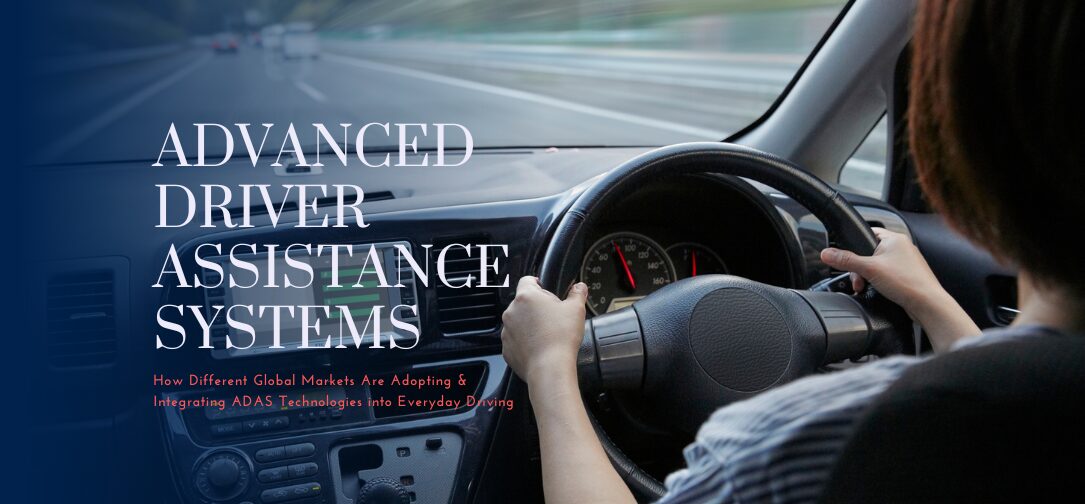Advanced Driver Assistance Systems (ADAS) are becoming a cornerstone of modern vehicle technology. These innovations help drivers avoid collisions, stay aware of their surroundings, and even reduce stress during long commutes.
While adoption varies across regions, global momentum is undeniable. This article explores how different markets are embracing ADAS and what it means for the future of driving.
Introduction
The automotive industry is undergoing a major transformation, with ADAS at the heart of the change.
As vehicles evolve into smart, semi-autonomous machines, ADAS features such as adaptive cruise control and automatic emergency braking are shaping how we drive.
But how different parts of the world are integrating this technology can vary significantly depending on infrastructure, regulation, and consumer readiness.
What Is ADAS and Why Does It Matter
ADAS stands for Advanced Driver Assistance Systems – technologies designed to improve vehicle safety and driving comfort by automating, adapting, or enhancing certain functions.
These systems serve as a bridge between traditional driving and full vehicle autonomy.
Understanding ADAS: Key Technologies and Features
At its core, ADAS includes a range of features powered by sensors, radar, cameras, and onboard software.
Common examples include:
- Lane-keeping assist,
- Blind spot monitoring
- Adaptive cruise control
- Forward collision warnings
These tools work together to give drivers enhanced control and situational awareness, reducing human error and boosting road safety.
The Benefits of ADAS for Everyday Driving
Beyond safety, ADAS features can reduce driver fatigue and improve the overall driving experience.
Imagine long highway drives made easier with adaptive cruise control or urban driving made safer with automatic emergency braking. These benefits are contributing to a strong global push for adoption, especially in densely populated or high-traffic regions.
A Global Perspective on ADAS Adoption
While the global growth of the ADAS market is significant, the integration of ADAS technologies is not happening uniformly across the globe. Developed markets often lead due to stronger infrastructure and regulatory incentives, while emerging regions face different sets of challenges.
North America: Early Adoption and Tech-Led Growth
North America has been a frontrunner in adopting ADAS, driven largely by innovation and market demand.
Automakers like Tesla, Ford, and General Motors are incorporating these features into many of their new models. Public awareness is relatively high, and consumers increasingly view ADAS as a must-have rather than a luxury.
Europe: Regulation-Driven Standardization
In Europe, regulation is the key driver. Initiatives like Euro NCAP have created strong incentives for automakers to implement ADAS features.
As a result, even mid-range vehicles come equipped with advanced safety systems. Countries like Germany, Sweden, and the Netherlands are leading the way in aligning vehicle safety standards with technological advancements.
Asia-Pacific: Fast Innovation and Mass Scaling
The Asia-Pacific region, which includes Australia & New Zealand, is becoming a hub for ADAS innovation and rapid market growth.
Governments and manufacturers in these countries are making major strides in embedding driver assistance technology into their vehicles.
Japan and South Korea: Pioneers in Automotive Tech
Japan and South Korea have long been leaders in vehicle innovation. Companies like Toyota, Honda, Hyundai, and Kia are integrating ADAS features in even their standard models.
These countries also benefit from supportive government policies and consumer openness to tech adoption.
China: Rapid Integration and Mass Market Push
China has rapidly emerged as one of the most dynamic ADAS markets.
Driven by smart city projects and a booming electric vehicle industry, Chinese automakers are deploying ADAS features across a wide range of models. The government has encouraged tech integration through subsidies and strategic development policies.
Emerging Markets: Challenges and Opportunities
In regions like Southeast Asia, Latin America, and parts of Africa, ADAS adoption is slower due to a combination of lower consumer awareness, affordability issues, and inconsistent infrastructure.
However, as costs decrease and awareness improves, these markets may become the next frontier for widespread ADAS use.
Key Factors Influencing ADAS Integration
Various elements determine how effectively ADAS is adopted within a market. These include consumer attitudes, technological infrastructure, and manufacturing trends.
Consumer Awareness and Trust
One of the biggest challenges for ADAS adoption is consumer trust. Drivers may be wary of relying too much on automated systems or may not fully understand how the features work.
Educational campaigns and transparent marketing from automakers are helping to bridge this knowledge gap and boost acceptance.
Infrastructure and Digital Mapping
ADAS systems are only as good as the environments in which they operate. Reliable digital mapping, high-quality road markings, and consistent traffic signage are critical.
In more developed regions, investments in smart infrastructure and 5G networks are helping ADAS systems reach their full potential.
Vehicle Manufacturing and Retrofitting Trends
Most new cars today come pre-installed with ADAS features, but there’s also a growing trend toward retrofitting older vehicles.
This allows drivers to enjoy the benefits of driver assistance without purchasing a new car. Aftermarket kits often include cameras, sensors, and even heads-up displays to replicate factory-installed features.
The Role of Auto Glass in ADAS Performance
Auto glass – especially the windshield – plays a surprisingly critical role in ADAS functionality. Many systems rely on cameras and sensors that are mounted to or embedded in the windshield.
Why Calibration Matters After Windshield Replacement
Replacing a windshield today involves much more than just fitting a new piece of glass.
Many modern vehicles have ADAS sensors and cameras mounted directly to or behind the windshield. This can lead to slight misalignments due to the different density of the glass after replacement, which can compromise the ADAS reliability.
Professional calibration is essential after any windshield service to ensure these components are precisely realigned. Without proper calibration, critical safety features like lane-keeping assist, automatic emergency braking, and adaptive cruise control may not function correctly.
Ensuring these systems remain accurate and responsive is a vital step in maintaining the overall safety and reliability of your vehicle.
The Road Ahead: What’s Next for Global ADAS Adoption
Automotive technology continues advancing, which is influencing how vehicles are built and how drivers interact with them.
For example, technology is reshaping the way cars are marketed and sold. Innovations in virtual showrooms, smart vehicle features, and AI-driven customer experiences are driving a new wave of engagement in the automotive industry.
For ADAS, the future lies in its evolution toward full vehicle autonomy. Machine learning and AI are making these systems smarter, while over-the-air software updates allow for continuous improvement.
As adoption increases and technology advances, we can expect ADAS to become a standard feature worldwide, not just a premium upgrade.
Conclusion
ADAS technologies are redefining what it means to drive. From North America’s innovation-driven growth to Europe’s regulation-led standardization and Asia’s rapid integration, every region is finding its own path.
While technology challenges remain in emerging markets, the overall global trend is clear: smarter, safer, and more connected vehicles. As infrastructure and consumer education improve, ADAS will continue to make everyday driving more secure and less stressful.



































